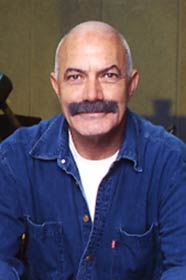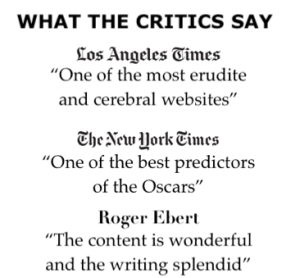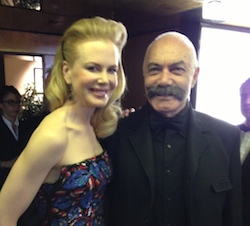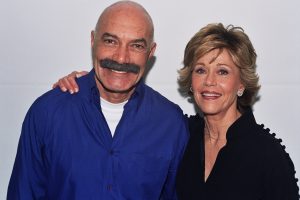n ambitious historical epic, covering 70 years of life and social conflict in the Emilia region of Italy, 1900 had the misfortune of being released after Bertolucci made his masterpiece, Last Tango in Paris, the film that had established him as the most famous gifted director in world cinema.
Grade: B+
| 1900 | |
|---|---|

U.S. theatrical release poster
|
|
The movie, which boasted a high caliber international cast, including Brando, Burt Lancaster, and Robert De Niro, caused controversy not only because of its explicit sexuality and graphic violence but also because of its unusual length.
The original cut, screened at the Cannes Film Festival, ran five and a half hours.
After a heated dispute between the director and the film’s producer, Alberto Grimaldi, it was considerable pared down.
However, the shorter version was dismissed by most critics as incoherent and incomprehensible.
Years later, Bertolucci’s original cut was re-released, but this version was also panned by most critics.
The movie featured an international ensemble, including De Niro, Gérard Depardieu, Dominique Sanda, Francesca Bertini, Laura Betti, Stefania Casini, Ellen Schwiers, Sterling Hayden, Alida Valli, Romolo Valli, Stefania Sandrelli, Donald Sutherland, and Burt Lancaster.
Set in Bertolucci’s ancestral region of Emilia, the tale chronicles the lives and friendship of two men: the landowning Alfredo Berlinghieri (De Niro) and the peasant Olmo Dalcò (Depardieu).
The two men get involved in the political conflicts between fascism and communism that took place in Italy in the first half of the 20th century.
With an initial runtime of 317 minutes, 1900 is one of the longest commercially released films ever made. Its length led to its being presented in two parts in many countries, including Italy.
In other countries, such as the U.S., a single edited-down version of the film was released.
Over the years, 1900 has received several special edition home video releases. A restoration of the film premiered out of competition at the 74th Venice Film Festival in 2017.
The initial credits are displayed over a zoom out of Giuseppe Pellizza da Volpedo’s painting, “The Fourth Estate.”
The tale begins on April 25, 1945, when Italy is liberated from the fascists. The peasants in Emilia-Romagna attempt to join the partisans and to place the estate’s owner, Alfredo Berlinghieri, under arrest.
The narrative then moves back to the start of the century.
Born on the day of composer Giuseppe Verdi’s death, January 27, 1901, Alfredo Berlinghieri and Olmo Dalcò come from opposite ends of the social class spectrum. Alfredo is from a family of wealthy landowners, who are led by his popular grandfather (Alfredo or Alfredo the Elder). He grows up with his cousin Regina.
In contrast, Olmo is an illegitimate peasant born to an unmarried woman who already has had several children. His grandfather Leo is the foreman and peasants’ spokesman who carries out a duel of wits with the elder Alfredo.
Attila and Regina, apprehended, are imprisoned in the Berlinghieri pigsty, and Attila confesses his murders before being executed.
Olmo returns to witness Alfredo’s trial before a workers’ tribunal. Accused of letting workers suffer, Alfredo is sentenced to death, but he is saved when Olmo declares the padrone dead, symbolizing the overthrow of the system.
The new government’s representatives and soldiers arrive, urging the peasants to surrender their arms. Olmo convinces them, though he and Alfredo hold that the class system and sharp stratification will continue to prevail.
In their senior years, the elderly Alfredo and Olmo playfully tackle each other. They walk along a railroad track that they used to frequent as boys. Alfredo lies down on the tracks, mimicking a childhood activity of theirs. A train passes over him, a vivid reminder of their childhood game.
In 1900, historical forces were echoed by psychological ones. The dialectic between its two protagonists — the laborer and the landowner, the Marxist and the capitalist — was rooted in history.
But it also reflected Bertolucci’s own psyche, the ongoing struggle between his revolutionary, idealized self and his complacent, bourgeois existence.
Cast
Robert De Niro as Alfredo Berlinghieri
Paolo Pavesi as young Alfredo
Gérard Depardieu as Olmo Dalcò
Roberto Maccanti as young Olmo
Dominique Sanda as Ada Chiostri Polan
Francesca Bertini as Sister Desolata
Laura Betti as Regina
Donald Sutherland as Attila Mellanchini
Stefania Sandrelli as Anita Foschi
Werner Bruhns [de] as Ottavio Berlinghieri
Stefania Casini as Neve
Sterling Hayden as Leo Dalcò
Anna Henkel [de] as Anita Dalcò, Olmo’s daughter
Ellen Schwiers as Amelia
Alida Valli as Signora Pioppi
Burt Lancaster as Alfredo the Elder
Romolo Valli as Giovanni Berlinghieri
Giacomo Rizzo as Rigoletto
Pippo Campanini as Don Tarcisio
Antonio Piovanelli as Turo Dalcò
Paulo Branco as Orso Dalcò
Liù Bosisio as Nella Dalcò
Maria Monti as Rosina Dalcò
Anna Maria Gherardi as Eleonora
Demesio Lusardi as Montanaro
Pietro Longari Ponzoni as Pioppi
José Quaglio as Aranzini
Clara Colosimo as Giovanna
Vittorio Fanfoni as Fanfoni
Edda Ferronao as Stella’s Daughter
Credits:
Directed by Bernardo Bertolucci
Screenplay by Franco Arcalli, Giuseppe Bertolucci, Bernardo Bertolucci
Produced by Alberto Grimaldi
Cinematography Vittorio Storaro
Edited by Franco Arcalli
Music by Ennio Morricone
Release dates: May 21, 1976 (Cannes) August 28, 1976 (Venice);, Sep 3, 1976 (Part 1); September 24, m1976 (Part 2)
Running time: 317 minutes; 162 minutes (Part 1); 154 minutes (Part 2)
247 minutesm(Edited version)
Budget: $9 million










